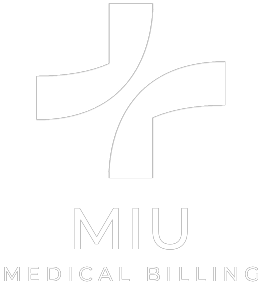It is crucial for providers who want to improve their revenue cycles and get paid as soon as possible to understand how denial codes work in medical billing. Denial codes indicate problems that must be solved before payments can be acquired, and understanding how to work with them plays an essential role in billing. This blog will discuss the most frequently used denial codes, their reasons, and how to avoid them.
1. What Are Denial Codes in Medical Billing?
Medical billing denial codes are the standardized codes the payer uses to justify the denial of a particular claim. These include codes corresponding to individual problems that must be solved for payment to be made. By knowing these codes, providers will avoid the circle of denial and be paid their claims on time. The first process in the right approach to bettering your practice’s revenue cycle is to comprehend denial codes in medical billing.
2. The Impact of Denial Codes on Revenue Cycle Management
Denial codes in medical billing may play a role in determining the operation of revenue cycle management. It seems that every denial results in a delay in payments, which affects the cash flow of the healthcare practices and puts a lot of pressure on them. The efficient handling of denial codes in a medical bill is much required to avoid revenue loss. This paper aims to review the literature regarding the most frequently used denial codes and subsequent measures to decrease the occurrence of denials and enhance the financial outcomes of practices.
3. Common Denial Codes in Medical Billing: Code CO-16
Another familiar denial code you will come across includes CO-16, which relates to the claim that insufficient information exists. It can be caused by incorrect or incomplete information about the patient, the lack of documentation, or coding mistakes. To remove CO-16 denial codes in medical billing, healthcare providers should check on every file submitted to ensure that it is filled out appropriately and that every supportive document is attached appropriately. This denial can be prevented if several checks are conducted before submission.
4. Addressing Denial Code CO-11: Duplicate Claims
CO-11: Denial code, primarily for duplicate claims in medical billing, is another common problem seen in the practice. This denial code is used when a claim is repeated through honest mistakes or systematic issues in the claim submission. In medical billing, some of the denial codes that should be of great concern to the practices are the CO-11 codes. Some of the measures, therefore, that the practices should put in place to ensure that they avoid the CO-11 denial codes are: The implication of only submitting one claim and ensuring that any resubmitted ones are well explained will go a long way in minimizing this sort of denial.
5. Resolving Denial Code CO-50: Non-Covered Services
The CO-50 denial code tells the provider that the service offered is not paid for through the patient’s insurance plan. This denial code in medical billing mainly emanates from failure to authenticate the insurance policy carried by the patient or poor understanding of the policy’s exceptions. CO-50 denial codes in medical billing call for practices to check with the insurance companies and inform patients of the coverage before providing services. This ensures that the patient does not receive any treatment that is not reimbursable, thus minimizing this sort of denial.
6. Handling Denial Code CO-97: Payment Adjustments
CO-97 is the denial code for payment reductions for contractual or other commitments. It is not easy for medical billing since this denial code involves tricky payer deals. CO-97 denial code management in medical billing requires medication of the payer agreements and contracts. Reviewing these agreements frequently and updating them can go a long way in ensuring our claims are processed correctly and that adjustments that may be needed are made as soon as possible.
7. Preventing Denial Code CO-29: Late Submission
Get denial code CO-29, which has arisen from a claim submitted after the allowed time and is one of the leading concerns in medical billing. Delayed billing or a wrong understanding of the payer deadlines is why this denial code in medical billing occurs. To minimize cases of CO-29 denial codes, practices should follow key time controls for the submission of claims and constantly check claims to see if they have been submitted within the mandatory time frames. This type of denial can be prevented by putting in place a disciplined practice of proposing claims.
8. Strategies to Reduce Denial Codes in Medical Billing
Therefore, the management of denial codes in medical billing calls for adequate training of the employees handling the billing process, Stamping good relations with the payers, and enhancing the medical billing software. It is possible to reduce the number of mistakes made by staff when submitting claims by training them on standard denial codes and how they should avoid them. Consequently, communication with the payers can clear any obscurity regarding the coverage or payment practices. The use of leakage and claim check billing software that enables a check to be done before submitting the claims also reduces the contraction of denial codes in medical billing.
Conclusion
Denial codes in medical billing feature some barriers that can hinder the process and affect the revenue of healthcare practices. However, using this knowledge of the causes of denial codes in practices and integrating relevant practices to reduce these codes, billing in practices will be more seamless. Understanding denial codes in medical billing and trying to prevent such a situation will, in the long run, enhance good financial outcomes and advance practice management.




